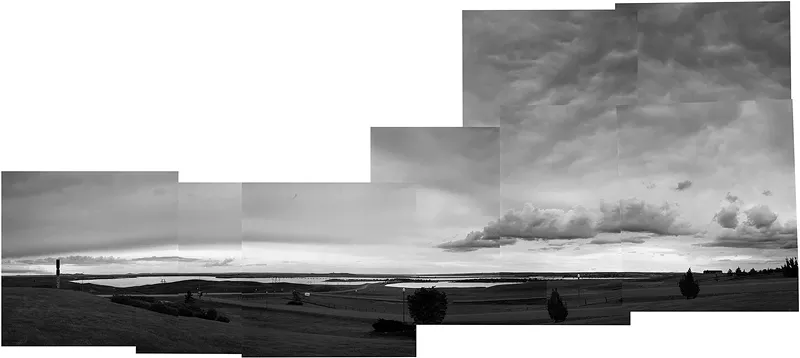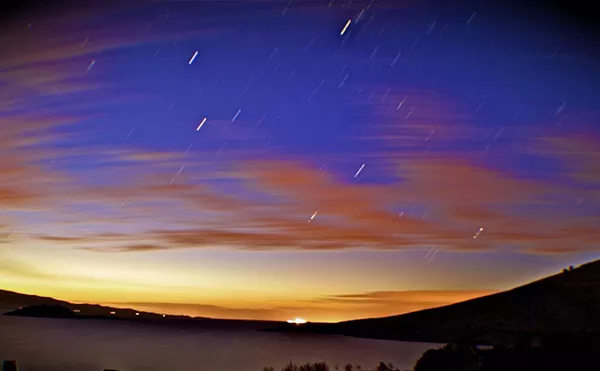Sounds a little dry, unless you happen to be an avid bird watcher.
But the exhibition is anything but boring. It’s rife with political implications. And Elrick is doing everything in her power to amplify their effect, including exploring Audubon's connections to slavery, and connections between rocks she photographed in South Dakota and the Standing Rock pipeline protests.
The simple fact that she's a woman working in landscape photography, a field dominated by men, is significant, says gallery director Liz Allen. And there's something more, she says. It's Elrick's fondness for creating composited images that force viewers to confront the reality that much of what they see is constructed.
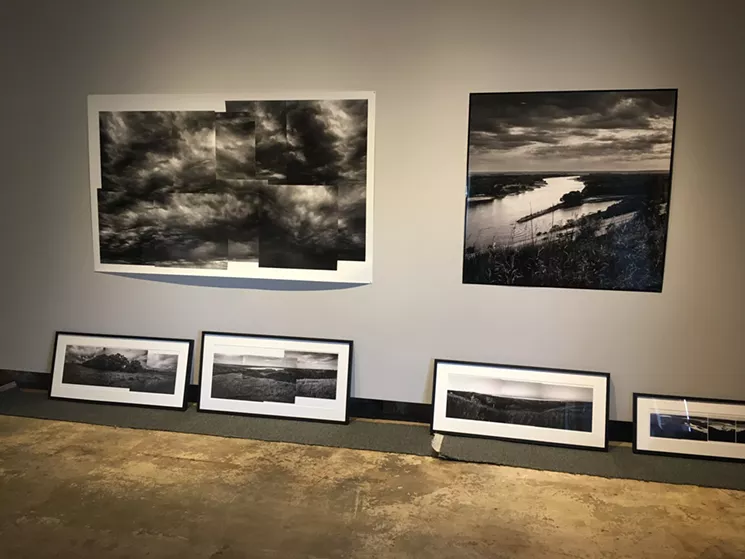
Photographs during installation for Krista Elrick's "Retracing Audubon: Contemporary Views" exhibition.
Lynn Trimble
"The change in the landscape since Audubon's time is downright depressing," says Elrick, whose work calls attention to the impact humans are having on various habitats. Her photography couldn't be more timely, given America's current political landscape — complete with climate-change denials and calls for fewer regulations on industry.
"Elrick's work represents loss of habitat, and dwindling bird populations, but also beauty, resiliency and something worth preserving," Allen says.
But there's something more.
It's Audubon's life and times, which reflect the confluence of cultures at the heart of both American history and contemporary life.
Born in what's now Haiti in 1785, and raised by a matriarchy of slaves after his mother died just a few months later, Audubon traveled America, meticulously detailing hundreds of bird species before his death in New York City in 1851.
"Audubon intersected with plantation owners, slaves, and Native Americans, and that's what really interested me," Elrick says.
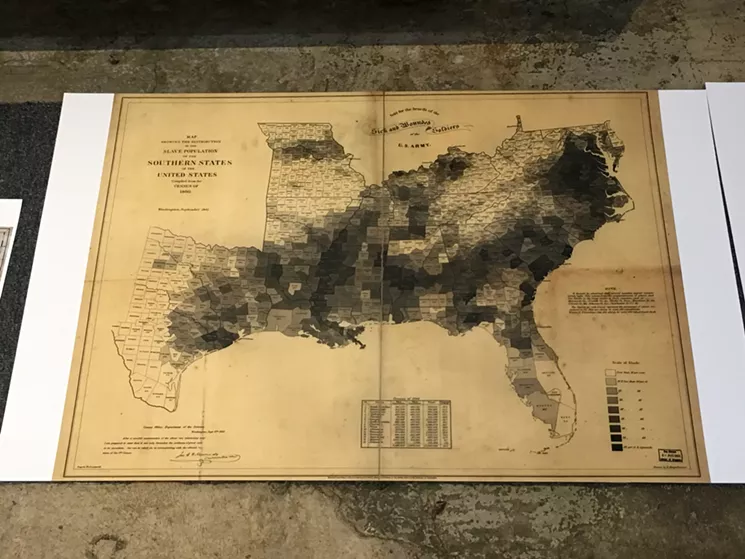
One of many maps being shown in a community room as part of Krista Elrick's "Retracing Audubon: Contemporary Views" exhibition.
Lynn Trimble
She's showing a series of maps that reveal the geographies of slave ownership and Native relocation by the federal government, as well as currency with images that capture prevailing views of women, slaves, and Native people. But gallery-goers will also see works by two local artists — ASU professor Stephen Marc and Diné artist Averian Chee.
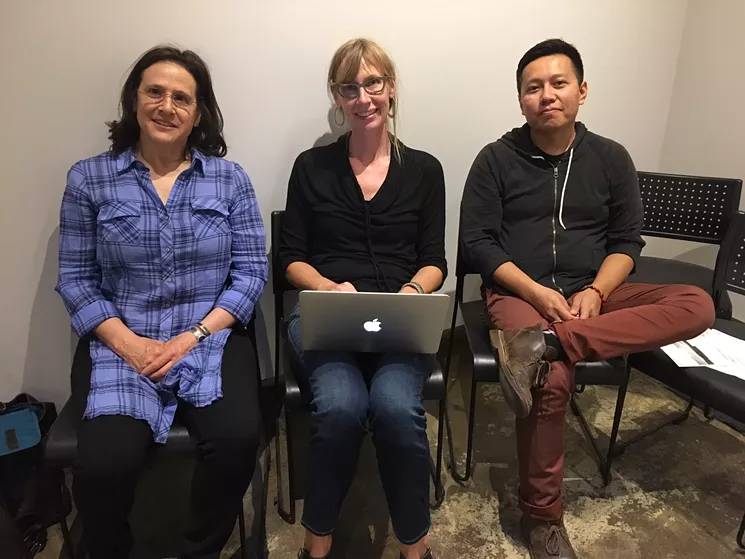
L to R: Krista Elrick, Liz Allen, and Averian Chee planning how to use the community room at Northlight Gallery.
Lynn Trimble
Chee spent several weeks at the Standing Rock encampment late in 2016, leading protest-based art projects like creating banners, posters, and arm patches. Several of the works Chee brought back from Standing Rock are also part of the community room display.
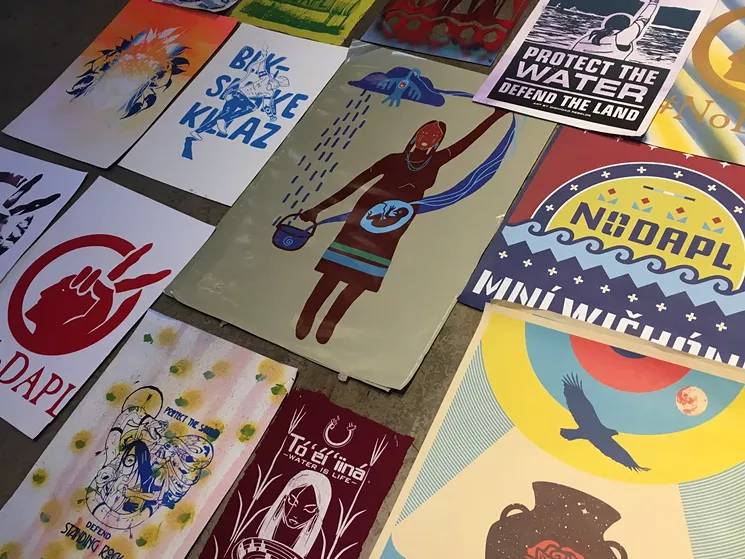
Signs Phoenix artist Averian Chee brought back from the Standing Rock protests in North Dakota.
Lynn Trimble
The opening reception, which happens from 6 to 10 p.m. on Friday, February 17, includes a panel discussion focused on the confluence of histories prevalent in Elrick's work. Participants include Elrick, Marc, and Jon Eagle, a tribal historic preservation officer for the Standing Rock Sioux Nation. "I really wanted to engage with descendants of people Audubon interacted with," Elrick says.
Elrick turned to Eagle after learning that round, large-scale formations she'd photographed in South Dakota held special meaning for Native people. Several of those photographs, including one used to create a collaborative piece with Chee, are featured in "Retracing Audubon: Contemporary Views." Elrick is eager to learn more about the objects, and their cultural significance.
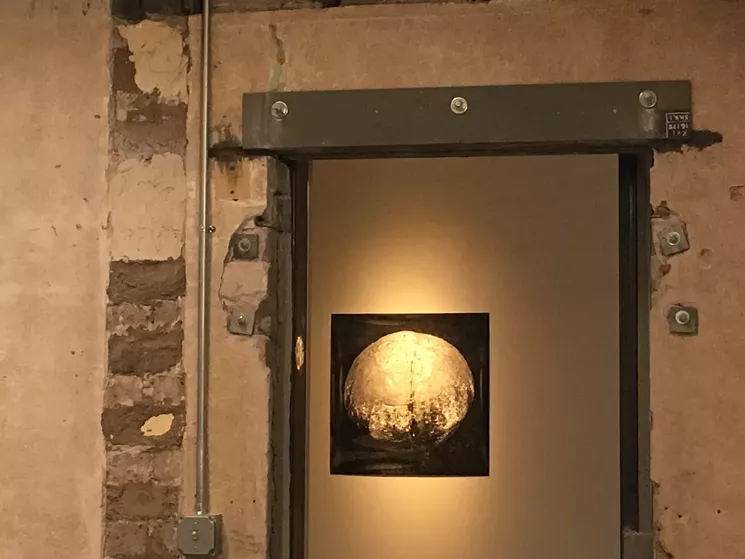
Cannonball Concretion Study (B15) by Krista Elrick, viewed from a preparation space inside Northlight Gallery.
Lynn Trimble
In Elrick's hands, they've become a window into the very heart of America, where external and interior landscapes are in constant flux, and taking pictures can be a profoundly political act.
"Retracing Audubon: Contemporary Views" continues through Friday, March 3, at Northlight Gallery. The opening reception takes place from 6 to 10 p.m. on Friday, February 17. A free panel discussion starts at 6:30 p.m., but space is limited. The reception also includes a screen printing station, so bring a T-shirt or paper (and a donation) along if you want to get a screen print of art created at Standing Rock. Visit the ASU Events website for exhibition details.

